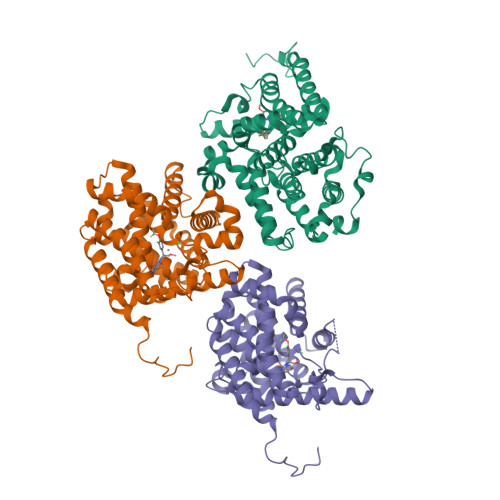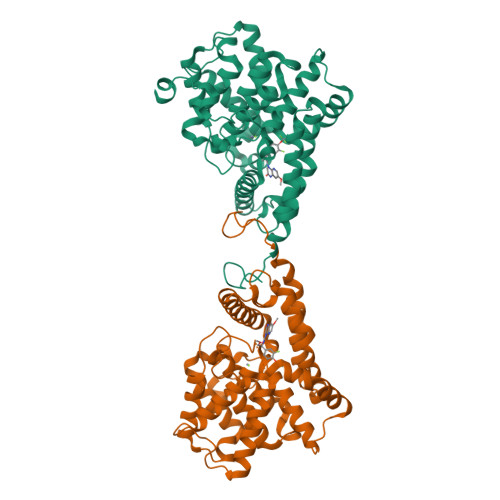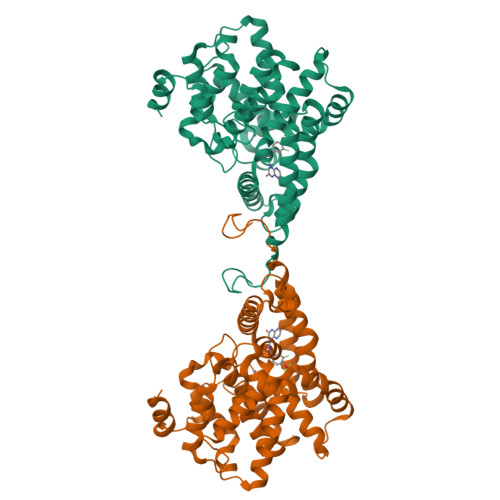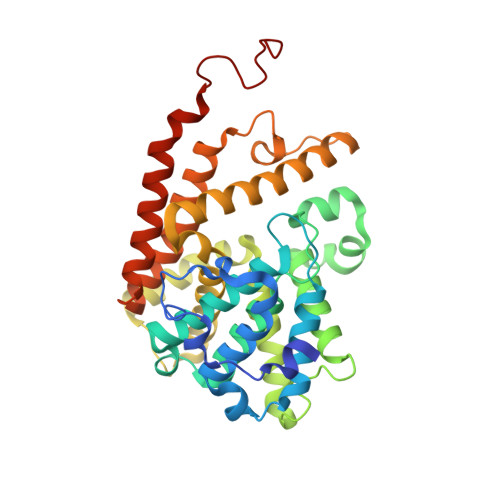Discovery of Clinical Candidate N-((1S)-1-(3-Fluoro-4-(trifluoromethoxy)phenyl)-2-methoxyethyl)-7-methoxy-2-oxo-2,3-dihydropyrido[2,3-b]pyrazine-4(1H)-carboxamide (TAK-915): A Highly Potent, Selective, and Brain-Penetrating Phosphodiesterase 2A Inhibitor for the Treatment of Cognitive Disorders.
Mikami, S., Nakamura, S., Ashizawa, T., Nomura, I., Kawasaki, M., Sasaki, S., Oki, H., Kokubo, H., Hoffman, I.D., Zou, H., Uchiyama, N., Nakashima, K., Kamiguchi, N., Imada, H., Suzuki, N., Iwashita, H., Taniguchi, T.(2017) J Med Chem 60: 7677-7702
- PubMed: 28796496
- DOI: https://doi.org/10.1021/acs.jmedchem.7b00807
- Primary Citation of Related Structures:
5VP0 - PubMed Abstract:
Phosphodiesterase (PDE) 2A inhibitors have emerged as a novel mechanism with potential therapeutic option to ameliorate cognitive dysfunction in schizophrenia or Alzheimer's disease through upregulation of cyclic nucleotides in the brain and thereby achieve potentiation of cyclic nucleotide signaling pathways. This article details the expedited optimization of our recently disclosed pyrazolo[1,5-a]pyrimidine lead compound 4b, leading to the discovery of clinical candidate 36 (TAK-915), which demonstrates an appropriate combination of potency, PDE selectivity, and favorable pharmacokinetic (PK) properties, including brain penetration. Successful identification of 36 was realized through application of structure-based drug design (SBDD) to further improve potency and PDE selectivity, coupled with prospective design focused on physicochemical properties to deliver brain penetration. Oral administration of 36 demonstrated significant elevation of 3',5'-cyclic guanosine monophosphate (cGMP) levels in mouse brains and improved cognitive performance in a novel object recognition task in rats. Consequently, compound 36 was advanced into human clinical trials.
Organizational Affiliation:
Pharmaceutical Research Division, Takeda Pharmaceutical Company Limited , 26-1, Muraoka-Higashi 2-chome, Fujisawa, Kanagawa 251-8555, Japan.






















